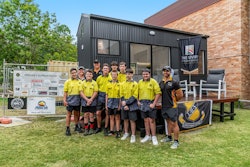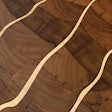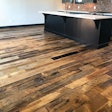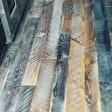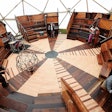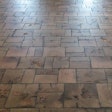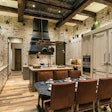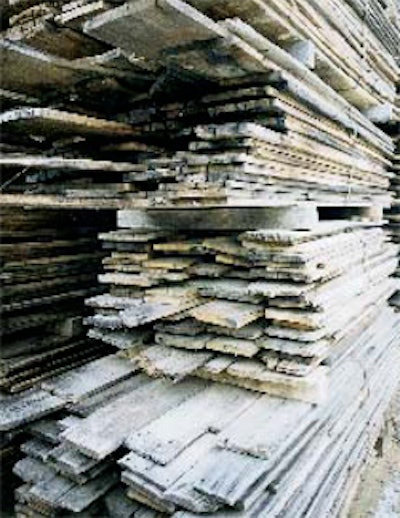
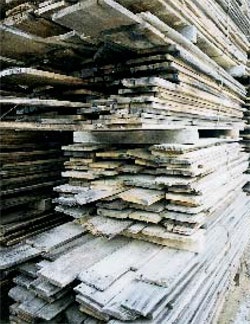 Rough antique lumber is stacked in the yard after initial organizing and tallying.
Rough antique lumber is stacked in the yard after initial organizing and tallying.
Although the production of solid wood flooring is a straightforward process, not varying drastically from mill to mill, it is more complex for the manufacturers of reclaimed wood flooring. To start with, buying raw materials is more complicated — loggers can't just cut down a forest of antique trees, and a lumber buyer can't just call up a sawmill and say he wants 2,000 board feet of "old barn wood." Furthermore, once the material is found, it can't simply go through the flooring line as is.
Where manufacturers find the raw materials for "reclaimed" or "antique" flooring can vary with every few pieces of wood. Many times the source is an old barn, or it could be a demolished factory. Some companies seek out these resources themselves, while others rely on a network of "pickers" or dismantlers — people who search the countryside looking for old structures in need of demolition. The pickers then bring the wood to the flooring company, where it is analyzed according to species, size and quality. The price paid depends on how much the buyer predicts the wood will actually yield in flooring.
Upon purchase, the wood is sorted by species and heads for the metal detection stage, where workers meticulously look for any evidence of nails or other metal fasteners in the boards. Using needle-nose pliers, hammers, vise grips, cat's-paw nail pullers and any other tool necessary, they yank the metal piece by piece until the board is visibly free of debris. The wood is then scanned with a metal detector for any hidden pieces, which are dug out as carefully as possible, minimizing damage to the board. At this point, the wood pieces head for the sawmill to become useable lumber. After the sawmill, the flooring goes through the stacking and kiln-drying process and is gone over once again by the metal detectors before heading into the flooring mill.
 Divers carefully remove logs from a river one at a time.
Divers carefully remove logs from a river one at a time.
Some manufacturers use an entirely different type of resource. They use logs that have been resting on the bottom of a lake or river, where they sank during the logging heydays of a century ago. Finding these logs is a long and arduous process. Divers do research in local libraries to identify old sawmill sites and other likely log locations, then must analyze each sunken log to see if it is actually old-growth timber. Most sunken logs are the result of a storm and have branches. Those that do not have branches are examined to make sure they have the dense growth rings that denote old-growth logs. Once found, these logs are pulled by hand one at a time to avoid damage to river and lake bottoms.
Because of the great difficulty in finding the old logs, great care must be taken with their milling. The logs are turned many times to isolate any wind shakes that may be in the center of the log. In cases of old-growth pine, the logs are so full of oleoresin that the wood is actually easier to dry than freshly cut lumber. Still, the logs are typically air-dried and then sent through the kilns.
Whether torn out of an old homestead or recovered from the depths, this old lumber is then milled into brand-new old wood flooring — flooring with a history that can only be guessed at. — K.M.W.
 Metal pieces are meticulously removed from the lumber, minimizing damage to the wood.
Metal pieces are meticulously removed from the lumber, minimizing damage to the wood.














